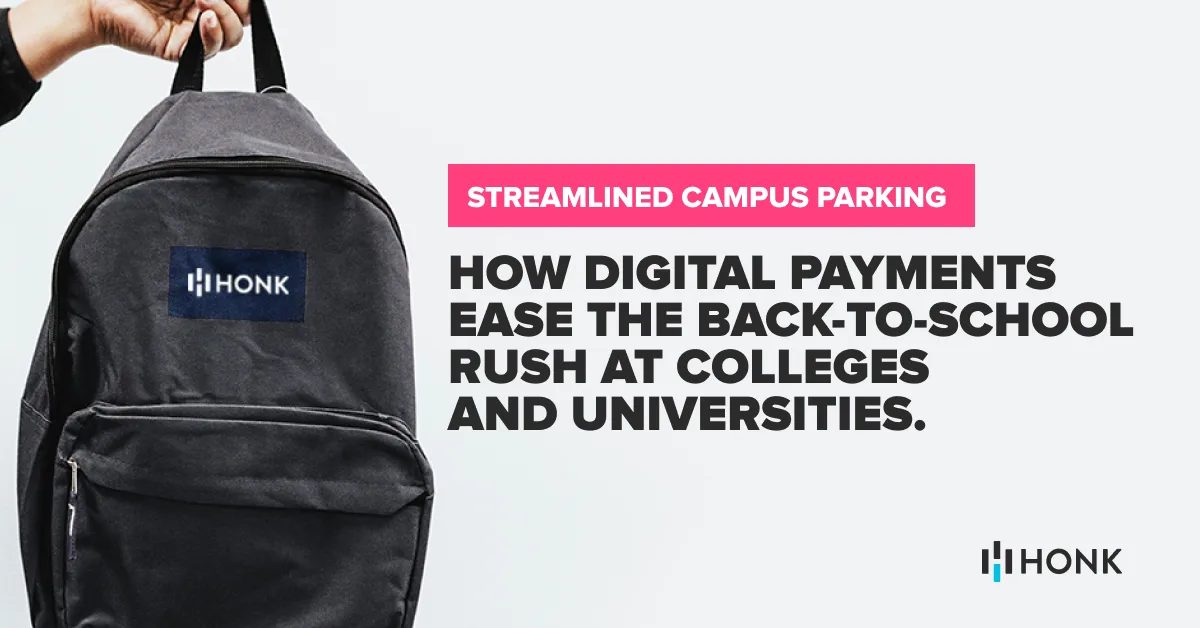As the back-to-school season kicks off, college and university campuses across the country are bracing for an influx of students, faculty, and visitors. Along with the excitement of a new academic year comes the challenge of managing campus logistics, and parking is often at the top of the list. The start of the semester is a critical time for parking operations, and with thousands of people returning to campus, a smooth and efficient parking system is essential.
Traditional parking systems, with their reliance on physical permits, meters, and cash payments, can quickly become overwhelmed during this period. Long lines, delayed transactions, and confusion over parking regulations are common issues that can create a frustrating experience for everyone involved. Fortunately, the adoption of digital payment solutions offers a way to streamline campus parking, making it easier for students, faculty, and visitors to find and pay for parking spaces without the usual hassles.
The Advantages of Digital Payments for Campus Parking
Digital payment solutions provide a host of benefits that traditional parking systems simply cannot match. Here are some key advantages that can help colleges and universities ease the back-to-school parking rush:
- Contactless and Convenient: In an era where contactless transactions have become the norm, digital payment systems offer a seamless and hygienic way for users to pay for parking. Students and faculty can pay for parking directly from their smartphones using digital wallets like Apple Pay and Google Pay, eliminating the need to handle cash or cards. This convenience is particularly valuable during the back-to-school period, when time is of the essence and every minute counts.
- Reduced Congestion: One of the biggest challenges of the back-to-school season is managing the high volume of traffic on campus. Traditional parking systems often lead to congestion as drivers search for spaces and fumble with payment methods. Digital payments, coupled with real-time parking availability updates, can significantly reduce congestion by allowing drivers to quickly find and pay for available spaces. This not only improves the flow of traffic but also enhances the overall parking experience.
- Elimination of Physical Permits: The days of distributing and managing physical parking permits can be a thing of the past with digital payments. Many digital systems offer the option to purchase virtual permits, which can be easily managed and enforced through license plate recognition technology. This reduces the administrative burden on campus parking authorities and ensures that students and faculty have a hassle-free experience.
- Flexible Payment Options: Digital payment platforms offer a range of payment options, from pay-per-use to subscription-based models. This flexibility is especially useful during the back-to-school season, as students and faculty may have different parking needs depending on their schedules. Some may prefer daily payments, while others may opt for a semester-long permit. Digital systems can accommodate these varying needs with ease.
- Enhanced Security: Digital payments are generally more secure than traditional methods, reducing the risk of theft and fraud. Transactions are encrypted, and the need to carry cash on campus is eliminated, providing peace of mind for students, faculty, and visitors.
- Data-Driven Insights: One of the most significant advantages of digital payment systems is the ability to gather and analyze data. Campus parking administrators can gain valuable insights into parking patterns, peak usage times, and revenue streams. This data can be used to optimize parking management strategies, make informed decisions about future infrastructure investments, and improve the overall efficiency of campus operations.
- Efficient Management of Validations: With various faculties, sporting events, and special occasions taking place throughout the academic year, having a digital system that easily manages and distributes parking validations is key. Digital platforms allow administrators to issue validations instantly and track their usage, ensuring that parking remains accessible and organized during high-demand events.
Preparing for the Back-to-School Rush
To fully capitalize on the benefits of digital payments during the back-to-school season, colleges and universities need to ensure that their parking systems are ready to handle the increased demand. Here are a few tips to help campus parking administrators prepare:
- Promote the Use of Digital Payments: Educate students, faculty, and visitors about the availability and advantages of digital payment options. Use email campaigns, social media, and campus signage to spread the word and encourage adoption.
- Optimize Parking Layouts: Review and update parking layouts to maximize the number of available spaces and improve traffic flow. Consider implementing designated areas for short-term parking, ride-sharing, and deliveries to further reduce congestion.
- Leverage Technology: Invest in technology that enhances the parking experience, such as license plate recognition systems, mobile apps, scan and text to pay, and real-time parking availability displays. These tools can help drivers find spaces more quickly and make the payment process more efficient.
- Monitor and Adjust: Use data collected from digital payment systems to monitor parking usage and make real-time adjustments as needed. If certain areas of campus are experiencing high demand, consider implementing temporary measures, such as additional parking attendants or shuttle services, to alleviate pressure.
The back-to-school season presents unique challenges for campus parking operations, but with the right digital payment solutions in place, colleges and universities can transform this hectic time into a smooth and efficient experience. By embracing contactless payments, reducing congestion, and leveraging data-driven insights, campus parking administrators can ensure that students, faculty, and visitors start the new academic year on the right foot.





